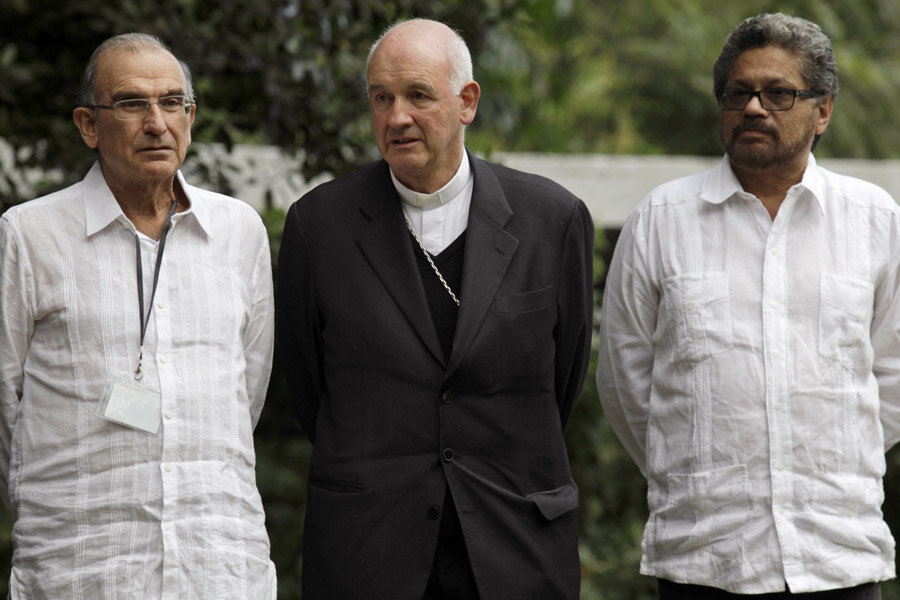Colombia's FARC proposes indefinite cease-fire – with strings attached
Loading...
| Quibdó, Colombia
An open-ended cease-fire announced by leftist FARC rebels is in doubt Thursday after the government rejected the guerrilla group’s conditions for the unilateral move.
The Revolutionary Armed Forces of Colombia (FARC), which has engaged in peace talks with the government since November 2012, said Wednesday that the unprecedented cease-fire would begin Dec. 20 and continue without a predetermined end date. "We have resolved to declare a unilateral cease-fire and an end to hostilities for an indefinite time,” said chief FARC negotiator Iván Márquez.
But the guerrilla group, which has been fighting the Colombian state for more than half a century, said the cease-fire would enter into effect once an international verification team was in place to monitor compliance. On Thursday, the government rejected any verification by international bodies until a final deal to end the conflict is reached at the negotiation table in Havana.
The government of President Juan Manuel Santos said in a statement that the FARC announcement was a step “in the right direction,” but added that its demand for verification “is a condition that the government does not accept.”
FARC did not immediately respond to the government statement and it is unclear whether the rebels will move ahead with the cease-fire without verification. An additional FARC condition is that the cease-fire would end if guerrilla units are attacked. "This unilateral cease-fire ... will only end if it is determined that our guerrilla structures have been the object of an attack by the military," the FARC rebels said.
By placing conditions on the cease-fire, FARC has put the government in a tight spot, says Jorge Restrepo, director of the Bogota-based Conflict Analysis Resource Center. “Any offensive operation by the military against the FARC will be seen as a move against the peace process and against this gesture of peace by the FARC,” Mr. Restrepo says.
Deescalation?
In this way, analysts say, FARC is likely trying to force the government into a bilateral cease-fire. President Santos has repeatedly refused to accept the guerrilla demand that both sides cease operations, saying it is the government's constitutional duty to protect its citizens. In addition, the government says rebels would use such a reprieve to rearm and regroup.
The cease-fire announcement comes at the close of the latest round of negotiations, which resumed last week after a brief crisis involving FARC’s capture of an Army general just 20 minutes outside this remote province capital in northwestern Chocó. Santos suspended negotiations until the general and his companions were freed Nov. 30. When talks began again, both sides said they were seeking ways to deescalate hostilities.
The government said FARC’s unilateral cease-fire should be in addition to “measures of deescalation that have been under discussion in Havana,” though it did not reveal details of what those measures might be.
Oliver Wack, an analyst with Control Risk, a security consultancy firm, says a declaration of a bilateral cease-fire is highly unlikely. “But [the government] can tone down operations,” he says, adding that the military have shown their willingness to do so during past temporary halts of guerrilla activity.
Since the peace talks began, the two sides have reached partial agreements on three of the five negotiating points on the agenda, including rural development, political participation for former guerrillas, and how to fight drug trafficking, a business that has financed FARC for the past several decades. Negotiators are now tackling the issues of transitional justice, reparations to victims, and demobilization, disarmament, and reintegration into society for former fighters.








